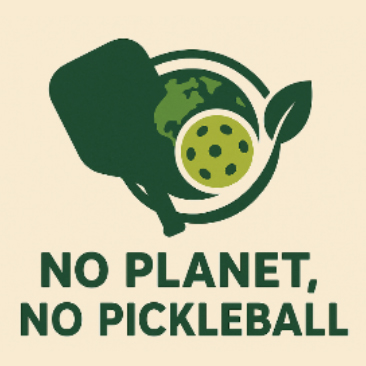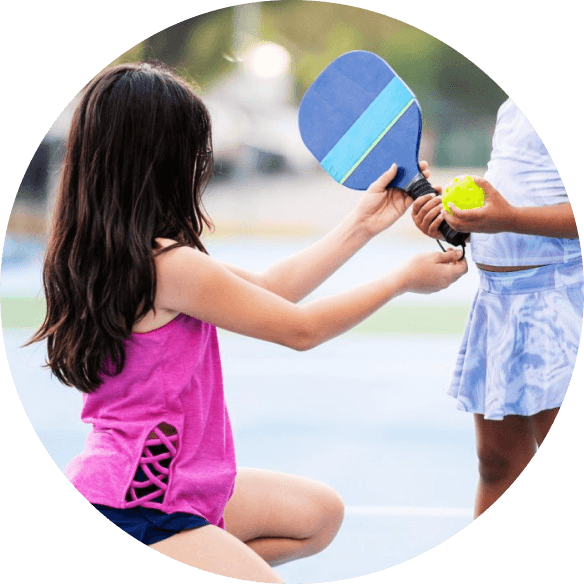The Environmental Footprint of Pickleball: A Balanced Analysis
Pickleball, a sport once confined to driveways and retirement communities, has transformed into one of the fastest-growing recreational activities in the United States and around the world. Its appeal is clear: it’s accessible, affordable, and fun for all ages. Communities are building new courts, hosting tournaments, and integrating the sport into schools, gyms, and public spaces.
But with rapid growth comes an inevitable environmental footprint. While pickleball’s impacts are less intense than many other sports, they are not negligible. This analysis examines the sport’s positive and negative environmental effects, offering a nuanced perspective — and a path forward for more sustainable play.
Positive Environmental Impacts
Efficient Use of Existing Infrastructure
One of pickleball’s greenest qualities is its ability to repurpose existing recreational spaces. Many communities have turned underused tennis courts, basketball courts, and even old parking lots into pickleball facilities. This approach minimizes the need for new construction, avoiding habitat destruction, large-scale material use, and the energy demands associated with new builds.
In many cases, a single tennis court can be converted into up to four pickleball courts, significantly increasing recreational capacity without expanding land use. This reuse model aligns with urban sustainability goals and helps municipalities get more value from existing assets.
Small Physical and Resource Footprint
Compared to resource-heavy sports like golf, football, or hockey, pickleball requires minimal space and far fewer inputs. Golf courses, for example, demand extensive irrigation, fertilization, and mowing, while pickleball courts require only occasional resurfacing and basic maintenance.
The sport’s compact court size (44 by 20 feet) makes it possible to fit multiple courts in small areas, enabling more people to play without consuming vast tracts of land.
Local Play and Reduced Transportation Emissions
Pickleball’s grassroots popularity means players often find courts within walking or short driving distance from their homes. This contrasts with sports that require travel to distant stadiums, ski slopes, or specialized facilities. Local play helps reduce vehicle emissions, particularly in suburban neighborhoods and urban centers with public court access.
Minimal Equipment Needs
Pickleball gear is relatively minimal: a paddle, a few balls, and a shared net can serve players for years. Paddles, especially when cared for properly, can last for thousands of games. The sport does not require seasonal uniforms, specialized shoes, or frequent equipment replacements like some other sports, reducing material demand and waste.
Potential as a Platform for Sustainability
With tournaments, clubs, and social leagues booming, pickleball provides a unique platform for environmental advocacy. Courts and events can serve as testing grounds for ecofriendly practices:
- Solar-powered lighting for outdoor courts
- Rainwater harvesting for court cleaning
- Compostable materials at tournaments
- Recycled or biodegradable balls and paddles
By leveraging its popularity, the sport could become a showcase for sustainable recreation.
Negative Environmental Impacts
Court Construction and Land Conversion
In areas where existing courts are unavailable, demand for pickleball often leads to new construction. Converting greenfields, wooded areas, or grassy parks into hard courts can remove valuable habitat, reduce biodiversity, and contribute to urban heat island effects.
These surfaces are typically impermeable, preventing natural groundwater recharge and increasing stormwater runoff, which can carry pollutants into local waterways. The production of asphalt or concrete also releases greenhouse gases.
Noise Pollution
Pickleball’s distinctive “pop” — caused by the paddle striking the plastic ball — has become a point of contention in many neighborhoods. The sound can carry long distances, particularly in open park settings, and sustained noise levels between 60–70 decibels can disrupt nearby residents.
From an ecological standpoint, noise pollution can also affect wildlife. Birds may alter their songs or abandon nesting sites, and small mammals may change foraging patterns in response to constant, irregular sounds.
Plastic Waste from Equipment
While pickleball requires little gear, the equipment it does use is not without environmental drawbacks. Balls, made from hard plastics, have relatively short lifespans, especially in extreme temperatures. Cracked or dented balls are almost never recycled and often end up in landfills.
Composite paddles, made from graphite, carbon fiber, and polymer cores, are also difficult to recycle because of their mixed-material construction. As the sport grows, so does the volume of this non-recyclable waste.
Energy Use in Facilities
Indoor pickleball venues require lighting, heating, ventilation, and air conditioning — sometimes for many hours a day. In regions where electricity is generated primarily from fossil fuels, these facilities contribute significantly to the sport’s carbon footprint. Outdoor courts are less energy-intensive but may still require lighting for evening play.
Travel for Tournaments and Pickleball Tourism
The rise of pickleball tourism — traveling to destinations specifically for tournaments, training camps, or resort play — has its environmental costs. Increased car and air travel contribute to greenhouse gas emissions, and large events generate additional waste from single-use plastics, promotional materials, and catering services.
Balancing the Scales
The environmental impacts of pickleball vary widely depending on how the sport is implemented. A community that repurposes old courts, uses solar lighting, and promotes local leagues will have a very different footprint from one building brand-new complexes on undeveloped land and hosting large-scale, high-travel tournaments.
Compared with many other sports, pickleball has the advantage of starting from a relatively low-impact baseline. Its small court size, simple gear requirements, and potential for local play give it a sustainability head start. However, unchecked growth could erode these advantages.
Recommendations for a More Sustainable Game
For pickleball to become a leader in ecofriendly recreation, players, clubs, and municipalities can take proactive steps:
- Donate To Our No Planet, No Pickleball Fund
This fund’s purpose is to help the sport become a leader in the green sports movement. We incentivize our Pickleball for Good EcoChampions – grantees, charity event organizers, crowdfunding partners, sponsors, donors, volunteers, and the industry as a whole – to step up their game and go green!
- Repurpose Before Building
Prioritize the conversion of existing tennis courts, basketball courts, or parking lots over developing new land. - Adopt Quieter Paddle Technology
Support innovations in paddle design that reduce sound levels, benefiting both wildlife and neighboring residents. - Recycle and Reuse Equipment
Work with manufacturers to develop recycling programs for broken paddles and worn-out balls. Encourage donations of usable equipment to schools and community centers. - Green Tournament Practices
Implement composting and recycling at events, minimize single-use plastics, encourage carpooling or public transit, and source food locally. - Switch to Renewable Energy
Install solar-powered lights on outdoor courts, choose energy-efficient lighting for indoor facilities, and incorporate water-saving landscaping. - Educate Players
Use club newsletters, signage, and social media to share tips on reducing environmental impact.
Conclusion
Pickleball’s surge in popularity presents both challenges and opportunities for environmental stewardship. On the one hand, the sport’s small scale, adaptability, and minimal equipment needs make it inherently less resource-intensive than many alternatives. On the other, noise concerns, plastic waste, and land conversion risks show that even small sports can have a sizable impact if growth isn’t managed thoughtfully.
By embracing sustainability now, the pickleball community can shape the sport’s future in a way that ensures it remains not just a gamechanger for players, but also a responsible citizen in the global effort to protect our planet.
With conscious choices and a shared commitment to environmental responsibility, pickleball can prove that rapid growth and ecological care don’t have to be at odds — they can, in fact, work hand in hand.
Or as we say, No Planet, No Pickleball!


